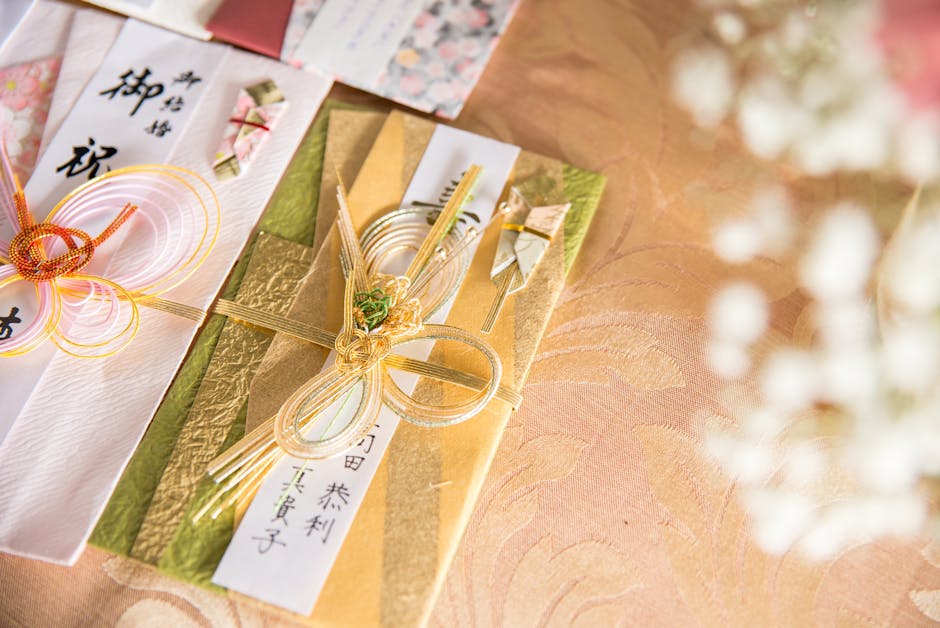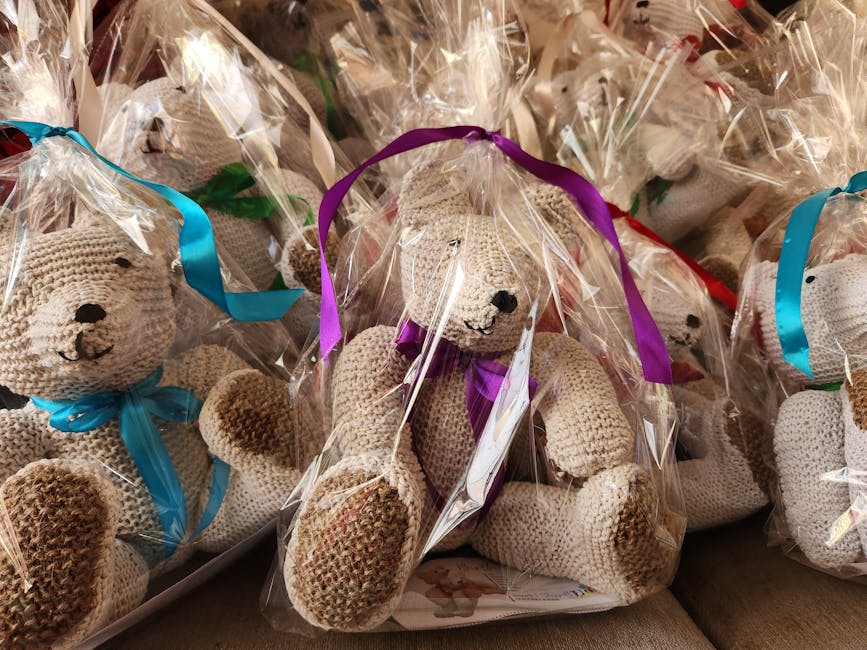The Art of Gift-Giving: Mastering the Perfect Present
Gift-giving is a universal practice that spans cultures and time periods, encompassing a myriad of meanings, traditions, and emotions. Whether it’s a birthday, holiday, wedding, or simply a gesture of appreciation, the act of giving a gift holds significant weight in our society. But what exactly makes a gift special? How do we navigate the complexities of choosing the perfect present for our loved ones? In this comprehensive guide, we delve into the art of gift-giving, exploring its history, psychology, and significance in modern society.
The History of Gift-Giving

Gift-giving has a rich and diverse history that dates back to ancient civilizations. In ancient Rome, gifts were exchanged during Saturnalia, a festival honoring the god Saturn. Similarly, in ancient Egypt, gifts were given to pharaohs as offerings in religious ceremonies. The act of giving gifts has been a way to express gratitude, strengthen social bonds, and show generosity throughout history.
During the Middle Ages, gift-giving became more formalized, with nobility exchanging lavish gifts to demonstrate wealth and power. The Renaissance period saw a rise in personalized gifts, with artisans creating bespoke items for their patrons. In the 19th century, the Industrial Revolution led to the mass production of gifts, making them more accessible to the general population.
Today, gift-giving is a multi-billion dollar industry, with retailers and e-commerce platforms offering a wide range of products for every occasion. The tradition of exchanging gifts has evolved over time, but its essence remains the same a gesture of thoughtfulness and care towards others.
The Psychology of Gift-Giving

Gift-giving is not just a social custom; it is deeply rooted in psychology and human behavior. According to research, the act of giving a gift activates the brain’s reward center, leading to feelings of happiness and satisfaction. Both the giver and the recipient experience a sense of joy and connection through the exchange of gifts.
Psychologists have identified several motives behind gift-giving, including the desire to strengthen relationships, express love and gratitude, and create a sense of reciprocity. Gifts serve as tokens of affection and symbols of social bonding, helping to reinforce emotional connections between individuals.
Gift-giving also plays a role in self-expression and identity formation. The gifts we choose reflect our values, tastes, and relationships with others. Whether it’s a handmade craft or a luxury item, our choice of gift communicates a message about who we are and what we value.
The Art of Thoughtful Giving

Choosing the perfect gift requires careful consideration and thoughtfulness. The art of gift-giving lies in understanding the recipient’s preferences, interests, and needs. By taking the time to personalize a gift, we show that we value the relationship and appreciate the recipient’s uniqueness.
One key aspect of thoughtful giving is listening and observing. Pay attention to the recipient’s likes and dislikes, hobbies, and aspirations. Take note of any hints or preferences they may have mentioned in passing. By being attuned to their needs and desires, you can select a gift that resonates with them on a personal level.
Another important element of thoughtful giving is creativity. Think outside the box and consider unique or handmade gifts that reflect the recipient’s personality. Personalized gifts, such as custom artwork or engraved jewelry, add a special touch that shows you’ve put thought into the gift selection process.
The Impact of Technology on Gift-Giving

In the digital age, technology has transformed the way we give and receive gifts. E-commerce platforms, social media, and mobile apps have made gift shopping more convenient and accessible. Online gift registries and wish lists allow recipients to curate their desired gifts, making it easier for givers to select the perfect present.
Social media has also influenced gift-giving trends, with users sharing gift ideas, recommendations, and wish lists with their networks. Influencer marketing has become a popular tool for brands to promote their products and reach a wider audience. The rise of online reviews and ratings has empowered consumers to make informed decisions about their gift purchases.
Despite the convenience of online shopping, many people still value the personal touch of in-person gift exchanges. The act of giving and receiving a physical gift holds a sentimental value that cannot be replicated through virtual interactions. Technology may have changed the way we shop for gifts, but the emotional impact of a thoughtful present remains unchanged.
The Ethical Dilemma of Gift-Giving
While gift-giving is generally seen as a positive and generous act, it can also raise ethical concerns. In some cultures, the exchange of gifts may be perceived as bribery or a form of manipulation. In professional settings, gift-giving can blur the lines between personal and professional relationships, leading to conflicts of interest.
Gift-giving etiquette varies across cultures and social norms, with some societies placing a high value on reciprocity and others viewing gifts as a token of goodwill. In the era of social media influencers and sponsored content, the line between authentic gift-giving and promotional marketing can be blurred, raising questions about the sincerity of the gesture.
To navigate the ethical dilemmas of gift-giving, it’s important to consider the intention behind the gift. Is the gift given out of genuine care and appreciation, or is there an underlying motive? Transparency and honesty are key to maintaining the integrity of the gift-giving process and ensuring that the gesture is received in the spirit in which it was intended.
The Future of Gift-Giving
As we look towards the future, the landscape of gift-giving continues to evolve with changing consumer preferences and technological advancements. Personalization and customization will play a key role in the future of gift-giving, as consumers seek unique and meaningful gifts that reflect their individuality.
Sustainable and ethical gifting practices are also on the rise, with a growing emphasis on eco-friendly products, fair trade practices, and charitable giving. Conscious consumers are increasingly choosing gifts that align with their values and contribute to a more sustainable future for the planet.
Virtual gifting and digital experiences are emerging trends in the gift-giving industry, allowing people to send virtual gifts, e-cards, and experiences to their loved ones. The rise of augmented reality and virtual reality technologies may further revolutionize the way we give and receive gifts, creating immersive and interactive gifting experiences.
Common Misconceptions About Gift-Giving
One common misconception about gift-giving is that the value of the gift equates to the thought and effort put into it. In reality, a thoughtful and meaningful gift can hold more significance than a costly or extravagant one. It’s the sentiment behind the gift that matters most, not the price tag.
Another misconception is that gift-giving is a one-way exchange. In truth, both the giver and the recipient benefit from the act of giving and receiving gifts. The emotional connection forged through gift-giving strengthens relationships and fosters a sense of connection and appreciation.
Conclusion
To wrap things up, the art of gift-giving is a timeless tradition that holds immense significance in our lives. From its historical origins to its psychological underpinnings, gift-giving is a complex and multifaceted practice that enriches our relationships and brings joy to both givers and recipients.
As we navigate the complexities of choosing the perfect gift, let us remember that it’s the thought and effort behind the gesture that truly matter. Whether it’s a small token of appreciation or a grand gesture of love, the act of giving a gift is a powerful way to show our care and affection for others.
So next time you’re faced with the challenge of selecting a gift, consider the art of gift-giving and the meaningful impact it can have on the recipient. Remember, it’s not about the gift itself, but the sentiment and thoughtfulness that accompany it.




